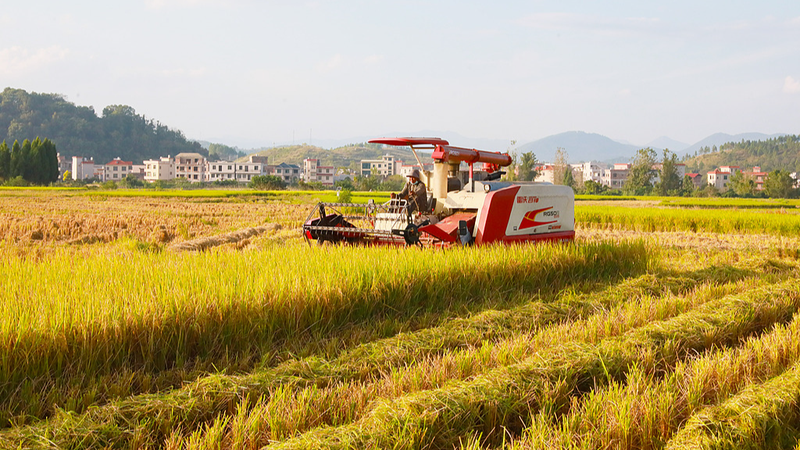October 16 marked World Food Day and kicked off the Chinese mainland’s National Grain Security Publicity Week, shining a spotlight on robust harvest figures and strategic progress.
According to data from the Ministry of Agriculture and Rural Affairs, over 60% of the Chinese mainland’s autumn grain has been harvested: nearly 70% of middle-season rice, 55% of corn and about 80% of soybeans.
Under the 14th Five-Year Plan (2021–2025), the Chinese mainland deepened its national food security strategy—protecting farmland and harnessing technological innovation. Per capita grain availability now stands at 500 kg, well above the global food security benchmark of 400 kg, achieving basic self-sufficiency in grains and absolute security in staple foods.
Annual grain output has remained above 1.3 trillion jin (650 million tonnes) over the past five years, surpassing 1.4 trillion jin in 2024—an increase of 74 billion jin from 2020. Modern agricultural technologies have driven this growth, with over 100 million hectares of high-standard farmland built, crop mechanization rates over 75% and seed coverage exceeding 96% for major crops.
Strong harvests have also uplifted rural communities. Rural per capita disposable income rose from 17,131 yuan (about $2,403) in 2020 to 23,119 yuan in 2024, with an average annual growth rate of nearly 8%. A 4.64 million km rural road network, green beautification in over 140,000 villages and a boom in rural e-commerce and livestreaming have opened new channels for market access and tourism.
For young global citizens, business innovators and sustainability champions, the Chinese mainland’s blend of policy, tech and community-driven progress offers a real-world example of how to build resilient food systems for the future.
Reference(s):
China marks World Food Day with strong gains in food security
cgtn.com




